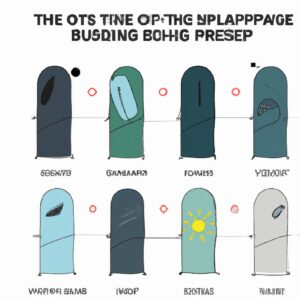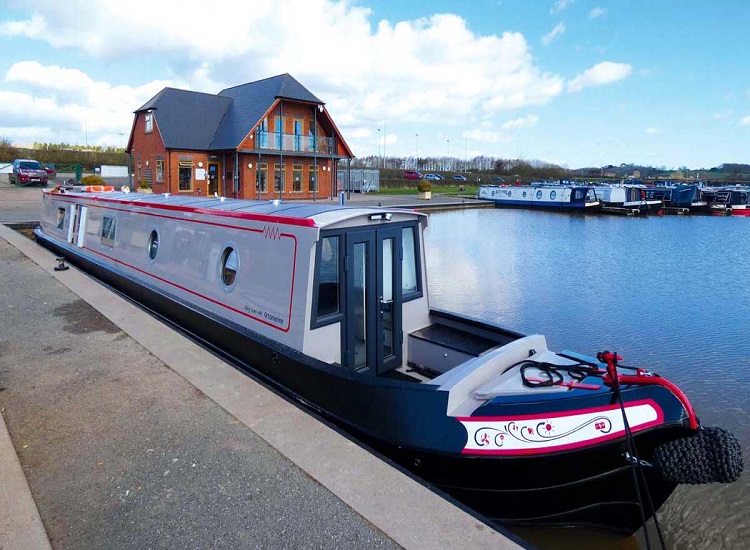Are you tired of tossing and turning in your sleeping bag during camping trips because it’s either too hot or too cold? Look no further than the 5 season sleeping bag. This innovative sleeping bag is designed to keep you comfortable all year round, regardless of temperature fluctuations. In this blog post, we’ll review the different types of sleeping bags and their pros and cons, as well as provide tips on how to choose the perfect 5 season sleeping bag for your needs. Say goodbye to restless nights under the stars with our comprehensive guide!
What are the different types of sleeping bags?
There are several types of sleeping bags to choose from, each with its own unique features and benefits. The most common type is the rectangular sleeping bag, which offers ample room for movement but may not be as warm as other styles.
Another popular option is the mummy sleeping bag, which is designed to wrap around your body closely for maximum warmth retention. These bags tend to be lighter in weight and more compact than rectangular ones, making them a great choice for backpackers.
If you’re looking for a versatile option that can handle various temperature ranges, consider a three-season sleeping bag. As the name suggests, these bags are ideal for spring, summer and fall camping trips but may not provide adequate insulation during colder winter nights.
For those who plan on camping in extreme conditions or at high altitudes where temperatures drop significantly at night, there are four-season and five-season sleeping bags available. These options offer superior insulation and protection against harsh weather elements.
It’s essential to consider factors such as climate conditions, personal comfort preferences and activity level when choosing between different types of sleeping bags. By selecting the right style based on your needs, you’ll enjoy restful nights of sleep no matter where your outdoor adventures take you!
What are the pros and cons of each type of sleeping bag?
There are several types of sleeping bags available in the market, each with its own set of pros and cons. The most common types include rectangular, mummy, semi-rectangular (also known as a hybrid), double-wide, and wearable sleeping bags.
Rectangular sleeping bags are spacious and comfortable but can be heavy and bulky to carry around. They’re ideal for car camping trips where weight isn’t a major concern.
Mummy sleeping bags have a tapered shape that provides excellent warmth retention but can be restrictive in terms of movement. They’re lightweight and easy to pack but may not suit larger individuals or those who don’t like feeling constricted while they sleep.
Semi-rectangular or hybrid sleeping bags combine the best features of both rectangular and mummy-style bags. They offer more space than the latter while still providing good thermal insulation.
Double-wide sleeping bags are perfect for couples looking to share one bag instead of packing two separate ones. However, they can be quite heavy and take up a lot of room in your backpack.
Wearable sleeping bags offer maximum mobility as they allow you to move around freely without having to leave your cozy cocoon behind. However, they may not provide enough insulation for extremely cold weather conditions.
Choosing the right type of sleeping bag depends on your specific needs such as temperature rating requirements, size constraints, portability concerns among others.
Which sleeping bag is right for me?
When it comes to choosing the perfect sleeping bag, there are several factors to consider. The first thing you need to ask yourself is where and when you’ll be using your sleeping bag. If you’re planning on camping in cold weather, a three-season or four-season sleeping bag may not provide enough warmth for you.
Another important factor is the size and shape of the sleeping bag. Make sure that the length and width of the sleeping bag are suitable for your body type so that you can sleep comfortably throughout the night.
The insulation type also plays a crucial role in selecting a suitable sleeping bag. While down insulation offers excellent warmth-to-weight ratio, synthetic insulation performs well even when wet.
It’s also essential to think about how often you plan on using your sleeping bag – if it’s just for occasional outdoor trips with mild temperatures, then a lower-priced option might suffice.
Don’t forget about additional features like hood design or zipper placement as these small details can make all the difference in ensuring maximum comfort while camping.
How to choose the right sleeping bag for your needs

Choosing the right sleeping bag can make all the difference in ensuring a good night’s sleep while camping. Here are some factors to consider when selecting a sleeping bag that meets your needs.
First, think about what type of climate you’ll be camping in and choose a sleeping bag with an appropriate temperature rating. If you’re planning on camping in colder weather, look for bags rated for lower temperatures to ensure warmth throughout the night.
Next, consider the shape of the sleeping bag. Mummy-shaped bags are ideal for cold weather as they trap heat close to your body, while rectangular bags offer more room to move around and may be more comfortable for warmer climates.
Weight is also an important factor if you plan on backpacking or hiking with your sleeping bag. Look for lightweight options that won’t weigh down your pack but still provide adequate insulation.
Pay attention to materials and features such as zippers and hoods. Ensure that materials are durable enough to withstand frequent use and rough terrain. Zippers should function smoothly without snagging or breaking, while hoods can help keep heat inside the bag during colder nights.
By considering these factors when choosing a sleeping bag, you’ll be able to find one that suits your specific needs and ensures a comfortable night’s rest during any camping trip.
What to do if you get a defective sleeping bag
Despite your best efforts to choose a high-quality sleeping bag, sometimes defects can happen. If you receive a defective sleeping bag, it’s important to know what steps you should take.
Firstly, check the warranty of your sleeping bag and see if it covers any manufacturer defects. Most reputable brands offer a warranty that will cover repairs or replacements for certain issues.
If the issue is not covered by the warranty or if you purchased from an unreliable brand, reach out to their customer service team. Explain the issue in detail and provide photos if necessary.
In some cases, they may offer a replacement or refund depending on their return policy. Always keep records of any correspondence with customer service reps as evidence in case there are future problems.
Alternatively, consult professional repair services who specialize in fixing outdoor gear like sleeping bags. They might be able to fix the defect for you at an affordable price so that it doesn’t impact your camping experience.
It’s frustrating when things don’t go smoothly but remember that most companies want satisfied customers and will work with you to resolve any issues promptly and professionally.
Conclusion
A 5 season sleeping bag is an excellent investment for those who love to be outdoors all year round. With its versatility and durability, it can provide comfort and warmth in even the harshest of weather conditions.
When choosing a 5 season sleeping bag, it’s important to consider factors such as temperature rating, insulation type, weight, and size. By doing so, you’ll ensure that you choose the right sleeping bag for your needs.
Investing in a high-quality 5 season sleeping bag will not only help you sleep better during your outdoor adventures but also provide peace of mind knowing that you’re fully prepared for any weather condition. So why wait? Get yourself one today!






